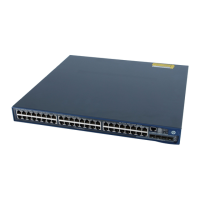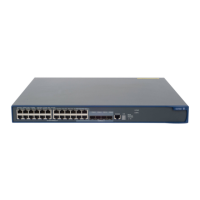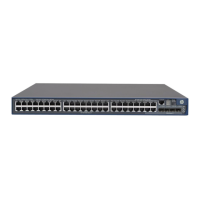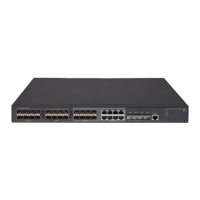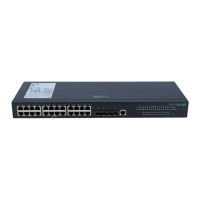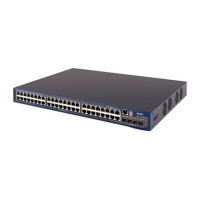38
To set up an IRF fabric:
Plan the installation site and IRF fabric setup parameters:
Planning IRF fabric size and the installation site
Identifying the master switch and planning IRF member IDs
Planning IRF topology and connections
Identifying physical IRF ports on the member switches
Planning the cabling scheme
2. Install IRF member
switches
See "Installing the switch.”
3. Connect the grounding
cable and power cords
See "Grounding the switch" and "Connecting the power cord."
5. Install interface cards
This step is required only for the A5120 EI switches.
See "Installing/removing an interface card (A5120 EI switches only)."
6. Configure basic IRF
settings
See "Configuring basic IRF settings.”
7. Connect the physical IRF
ports
See "Connecting the physical IRF ports.”
All switches except the master switch automatically reboot, and the IRF
fabric is established.
Planning IRF fabric setup
Planning IRF fabric size and the installation site
Choose switch models and identify the number of required IRF member switches, based on the user
density and upstream bandwidth requirements. The switching capacity of an IRF fabric equals the total
switching capacities of all member switches.
You can increase an IRF fabric's switching capacity by adding a switch without any topology change or
replacement.
Identifying the master switch and planning IRF member IDs
NOTE:
IRF member switches automatically elect a master. You can affect the election result by assigning a high
member priority to the intended master switch. For more information about master election, see the IRF
configuration guide for your switch.
Complete the following planning tasks:
Determine which switch you want to use as the master for managing all member switches in the IRF
fabric.
An IRF fabric has only one master switch. You use the command line interface of the master switch
to configure and manage all member switches in the IRF fabric.
